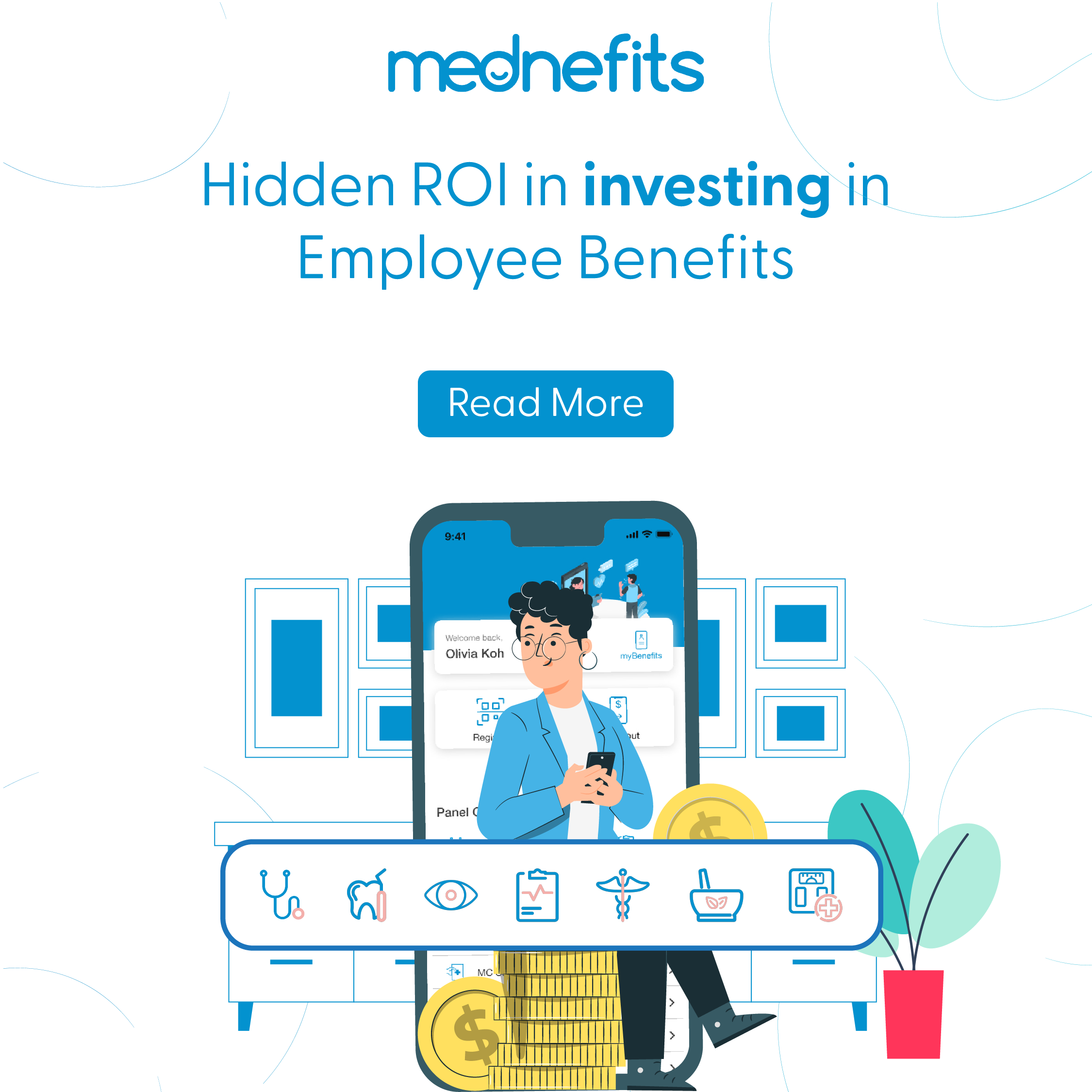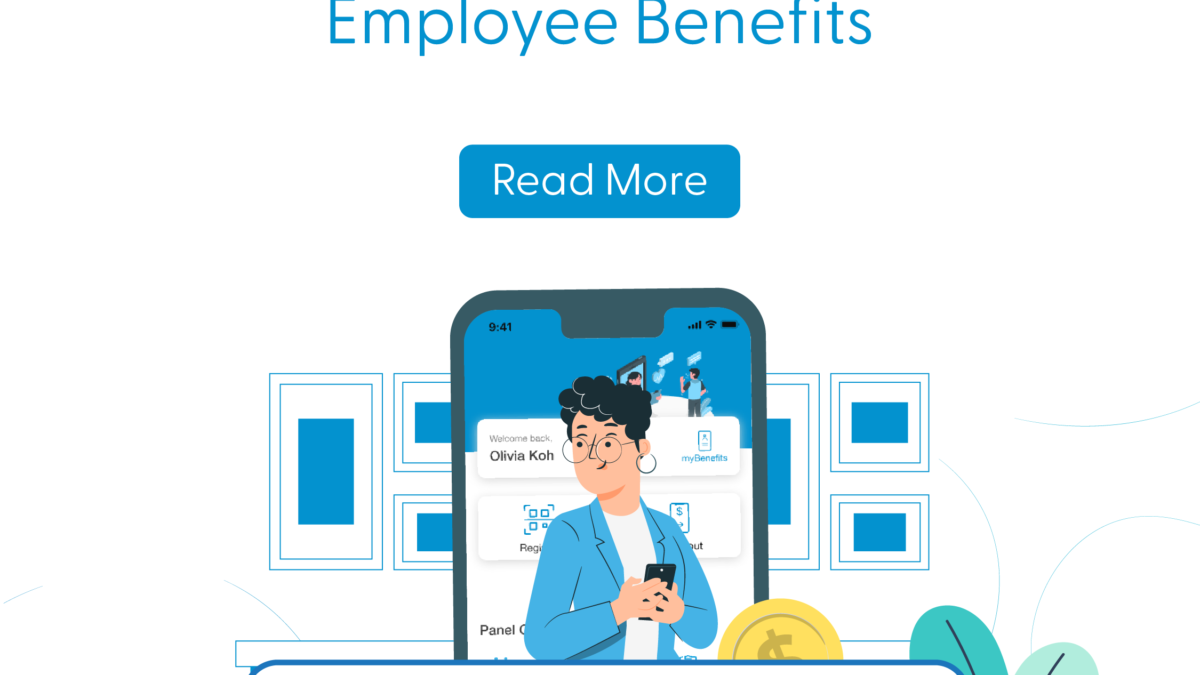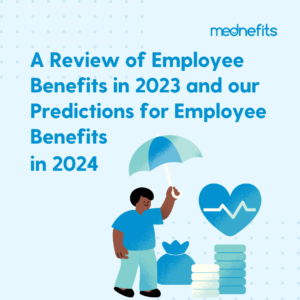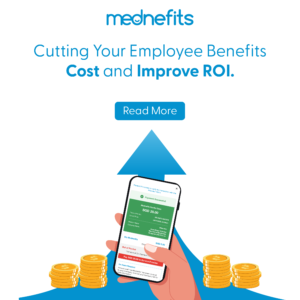
Optimising Healthcare Spending: Tackling Benefit Abuse in Malaysia’s Manufacturing Sector
May 23, 2024
Optimising Employee Benefits by Separating Outpatient Coverage for Cost-Efficiency
June 19, 2024Revealing The Hidden ROI Behind Employee Benefits Programmes
Employee Benefits
Revealing The Hidden ROI Behind Employee Benefits Programmes
June 5, 2024

Employee benefits programmes are the cornerstone of modern workplaces, with companies of all sizes offering a range of incentives to attract and retain top talent. From health insurance and retirement plans to flexible work arrangements and wellness programmes, these employee benefits are meant to enhance employee satisfaction, productivity, and overall well-being.
Despite these benefits, only 46% of organisations believe that their existing employee benefit plan is effectively developed to maximise the attraction and retention of top talent within the company. Unsurprisingly, considering the increasing cost of providing employee benefits due to the rise in healthcare costs and inflation, the financial implications of providing employee benefits remains one of the key factors organisations use to evaluate the impact of their policy.
However, for many businesses, the true impact of these programmes is often overlooked or underestimated. While the upfront costs of providing employee benefits can be significant, some return on investment (ROI) is often hidden beneath the surface.
Hidden ROI #1: Employee attraction and retention
By offering a competitive benefits policy, companies can not only drive the attraction of top talent but also increase employee retention for the long term.
- 69% of employees would be more loyal to the company if they had a wider array of benefits (Metlife Employee Benefit Trends Study)
- 70% of employees are likely to leave for a company that's known for investing in employee learning and development (Harris Poll)
- 78% of employers said employees are more likely to stay because of the employer's benefits programme (Willis Tower Watson)
This investment in employee well-being can lead to reduced turnover costs, as satisfied employees are more likely to stay with the organisation, contributing to its overall success. Moreover, benefits such as healthcare coverage, retirement plans, and flexible work arrangements can enhance employee loyalty, creating a positive work environment where staff feel valued and supported.
Providing attractive employee benefits can give businesses a significant edge, especially with such a competitive job market. Not only does it help in attracting top talent, but it also plays a crucial role in employee satisfaction and engagement. Companies that prioritise their employees' well-being through comprehensive benefits packages demonstrate a commitment to their workforce, fostering a sense of loyalty and dedication among employees. Ultimately, investing in employee benefits goes beyond just financial considerations; it is an investment in the company's culture, reputation, and long-term success.
Hidden ROI #2: Increase employee productivity and engagement
Increasing employee productivity and engagement is crucial for the success of any organisation. By offering employee benefit programmes such as health workshops, mental health resources, and access to wellness providers, organisations can demonstrate their commitment to the overall well-being of their workforce. These initiatives not only contribute to a healthier and happier work environment but also have shown evidence in boosting employee morale and motivation, leading to increased productivity and engagement.
- 94% of highly productive employees mentioned that a great employee benefits package motivates them (Wifi Talents)
In addition to promoting employee health and well-being, organisations can also improve work-life balance by providing flexible work arrangements. This can include options such as working-from-home options, flexible scheduling, and compressed workweeks, allowing employees to better juggle their personal and professional responsibilities.
- In Malaysia, great location and flexible working arrangements drive employee retention among 38.3% of employees (Hays)
By recognising and accommodating the diverse needs of their workforce, organisations can create a more inclusive and supportive work environment that fosters a healthy work-life balance.
Hidden ROI #3: Improved brand image and reputation
Establishing an improved brand image and reputation can significantly impact a company's success and growth in today’s competitive market. By investing in building a strong and positive brand identity, organisations can differentiate themselves from competitors, attract a loyal customer base, and ultimately drive revenue. A positive brand image conveys trust, reliability, and quality, creating a favourable impression among consumers and stakeholders. Over time, this reputation can lead to increased brand loyalty, customer retention, and positive word-of-mouth referrals, further solidifying the company's position in the market.
Moreover, a positive brand image not only benefits the company externally but also internally by enhancing employer branding. A favourable brand reputation can make a company more attractive to potential employees, increasing the talent pool and enabling the organisation to recruit top-tier candidates. Positive employer branding fosters a healthy work environment, boosts employee morale and engagement, and reduces turnover rates. As a result, the company can attract and retain skilled professionals who are aligned with its values and contribute to its overall success. Ultimately, a strong brand image not only attracts potential clients but also positions the company as an employer of choice, creating a competitive edge in the marketplace.
Checklist for maximising benefits from your employee benefit strategy
It is evident that providing employee benefits increases employee retention and attraction, improves employee productivity and helps improve the organisation’s branding. However, simply offering benefits is not enough. It is crucial for organisations to regularly review and assess their employee benefits strategy to ensure that it is meeting the needs and expectations of their workforce. This is where a checklist can be an invaluable tool.
By following this checklist, organisations can ensure that they are reaping the most benefits out of their employee benefit strategy and creating a competitive advantage in the marketplace:
- A diverse range of employee benefits for employees to choose from
- A benefit management tool to track employee benefits and employees’ real-time usage for consistent review
- Convenient platform interface for optimal employee experience when using employee benefits
- Quick claims processing and reimbursement process
Why Mednefits?
Mednefits provides a comprehensive benefit management solution for organisations looking to maximise the hidden benefits of their employee benefits programs. By offering a user-friendly platform and personalised support, Mednefits helps companies maximise the true ROI of their benefits programmes and make informed decisions to improve their employees' well-being and satisfaction.
With Mednefits, organisations can not only save on costs but also see tangible results in employee retention, productivity, and overall company success. It's time for companies to take a closer look at their employee benefits programmes and see the potential impact that Mednefits can bring to their organisation.




